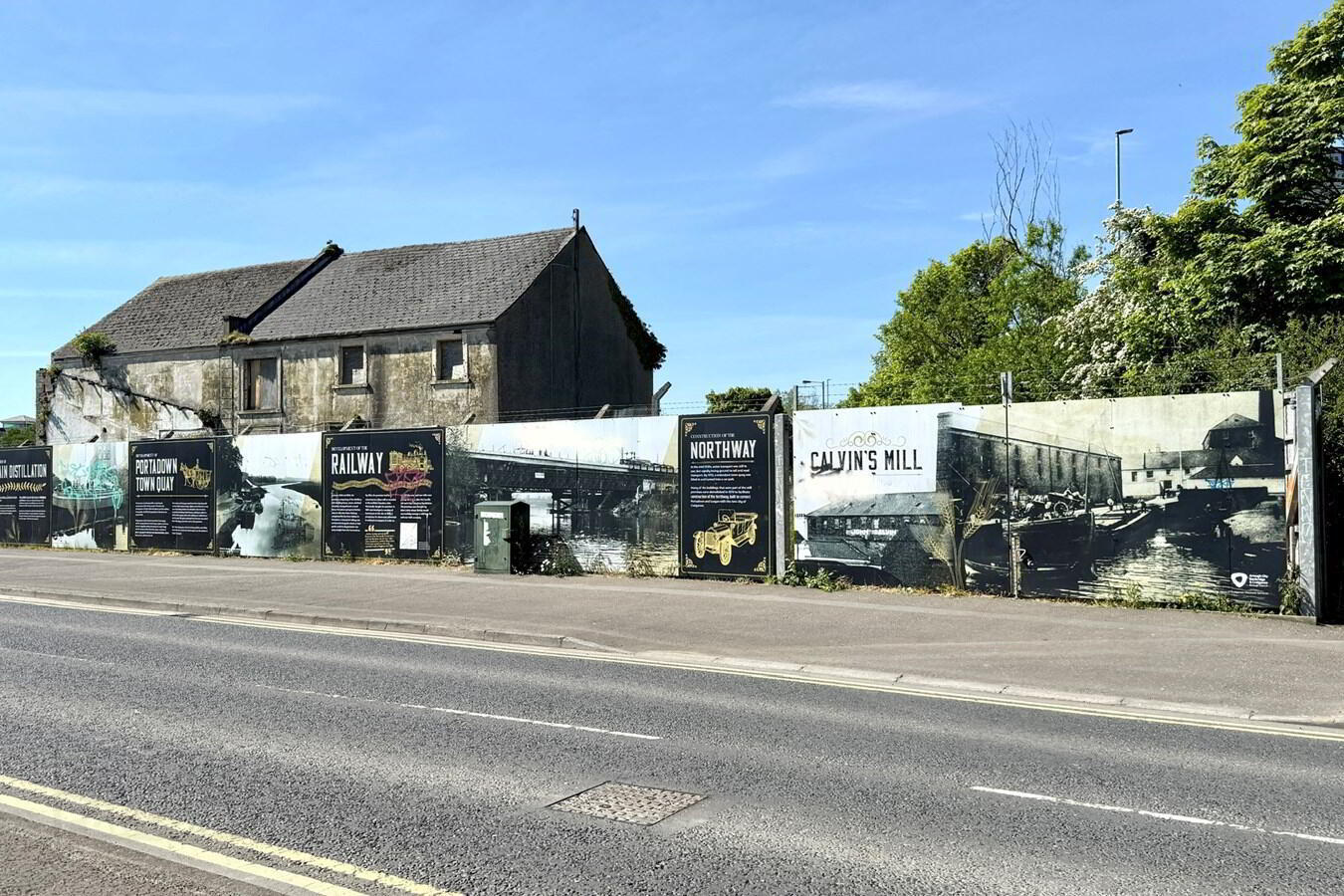
An historic Co Armagh building stretching back over two and a half centuries has gone on the market for sale.
And “someone with imagination” is being sought to restore and bring back into productive use a proud part of Portadown’s industrial past.
Once a whiskey distillery – and later a flour mill – Calvin’s Mill is described now as being in a “dilapidated” state.
But now it is hoped that a buyer can be found to prevent the loss of such an iconic landmark.
Calvin’s Mill is to be found on Castle Street in the town, its strategic location by the banks of the Bann ensuring a productive past, with a variety of uses over the years.
The Property Spot has now been tasked with trying to secure a new owner, with a guide price in the region of £185,000 quoted.
According to the agent, the “historic property” is sited in a “prominent location”.
While it is not currently ‘listed’, the building – or what remains – is understood to date over 250 years.
According to the agent: “It has seen a variety of uses over the past 250 years , including being a distillery of whiskey in the late 1800s.
“In those days its location close to the main transport hubs of the railway and the River Bann/ Newry Canal meant it was easy to receive raw materials and ship goods to their market.”
Indeed, Lurgan Ancestry gives an indication of that thriving period of uindustry in the so-called ‘Hub of the North’.
The website notes: “In the 1830s, the town of Portadown had a population of around 1,000 and work, other than weaving, was centred on the town quay and shipping from the Canal and the Lough.
“The scene would have been a busy one, with perhaps half a dozen lighters being loaded and unloaded along with a couple of barges or schooners.
“The cargoes would have consisted of grain, imported timber, iron, English and Scotch coal, slates, Irish coal, flour, and oatmeal. A small schooner from Scotland or Liverpool awaited a berth to unload slates, imported timber and potash. Salt also came in direct from England.
“Lighters were used on the canal, while barges, which were larger, worked on the river and the lough, as they were too wide for the canal.
“Barges really came into their own with the advent of steam when they were driven by engines. The scenes at the quay would have been noisy with carters shouting and belabouring their horses, while carts rattled over the rough stones on the road, some carting grain into the distillery, others bringing in native timber and farm produce.
“It was to be another 50-60 years before the roads were tarmacadamed. A long line of carts waited at the quayside to collect the cargoes.
“Barley was collected for the distillery across the road. Up to 3,000 tons of barley was used annually by the distillery.
“The distillery later became Calvin’s Mill.”
According to the Journal of Craigavon Historical Society, in a history of Sir Robert Hart, the distillery had been a landmark in Portadown “for many years”.
Sir Robert’s father, Henry, found a job in the Portadown Distillery, owned by William Hutcheson, when his own distillery at Milltown burned down in 1839.
The Society reported: “Writing under his pseudonym ‘The Chiel’, the founder of the Portadown Times W.H. Wolsey records that the distillery was established by members of the Religious Society of Friends at the end of the 18th Century.
“Opposite the distillery, a cut was made to provide water from the River Bann for the Distillery’s needs. Known as the ‘Quaker’s Cut’, the cut would become the town quay, where for a century materials for the town’s growing industry were offloaded from barges and lighters.
“In 1956, the quay was filled in, and is now the car park next to Shillington’s (Haldane Fisher) warehouse.
“Henry Hart worked at Portadown Distillery until around 1842, at which point he accepted a job as general manager with Hercules Bradshaw’s Distillery at Culcavey, Hillsborough. The new job necessitated the Hart family’s move from Milltown to Hillsborough, and so began the Harts’ long connection with that area.
“The Portadown Distillery was later converted into a flour mill, with John Calvin its last operator.
“Calvin’s Mill closed in 1965. Only part of the building remains standing today.”
The Property Spot, now seeking a buyer, is cognizant of the need to restore what remains.
The agent states: “Today, sadly it has fallen into disrepair, and needs someone with imagination to transform it again.
“This may involve renovation or demolition and rebuilding (subject to planning etc.). It is located on a prominent site of around 0.3 acres.
“With its location, beside a public car park, close to the town centre, the Railway Station and the river Bann at Shillington’s Quay, could make this ideal for an entrepreneur to turn it into a retail property, a restaurant / café or similar (subject to planning etc).”
Anyone who believes they have that imagination can contact the agents for further details.



